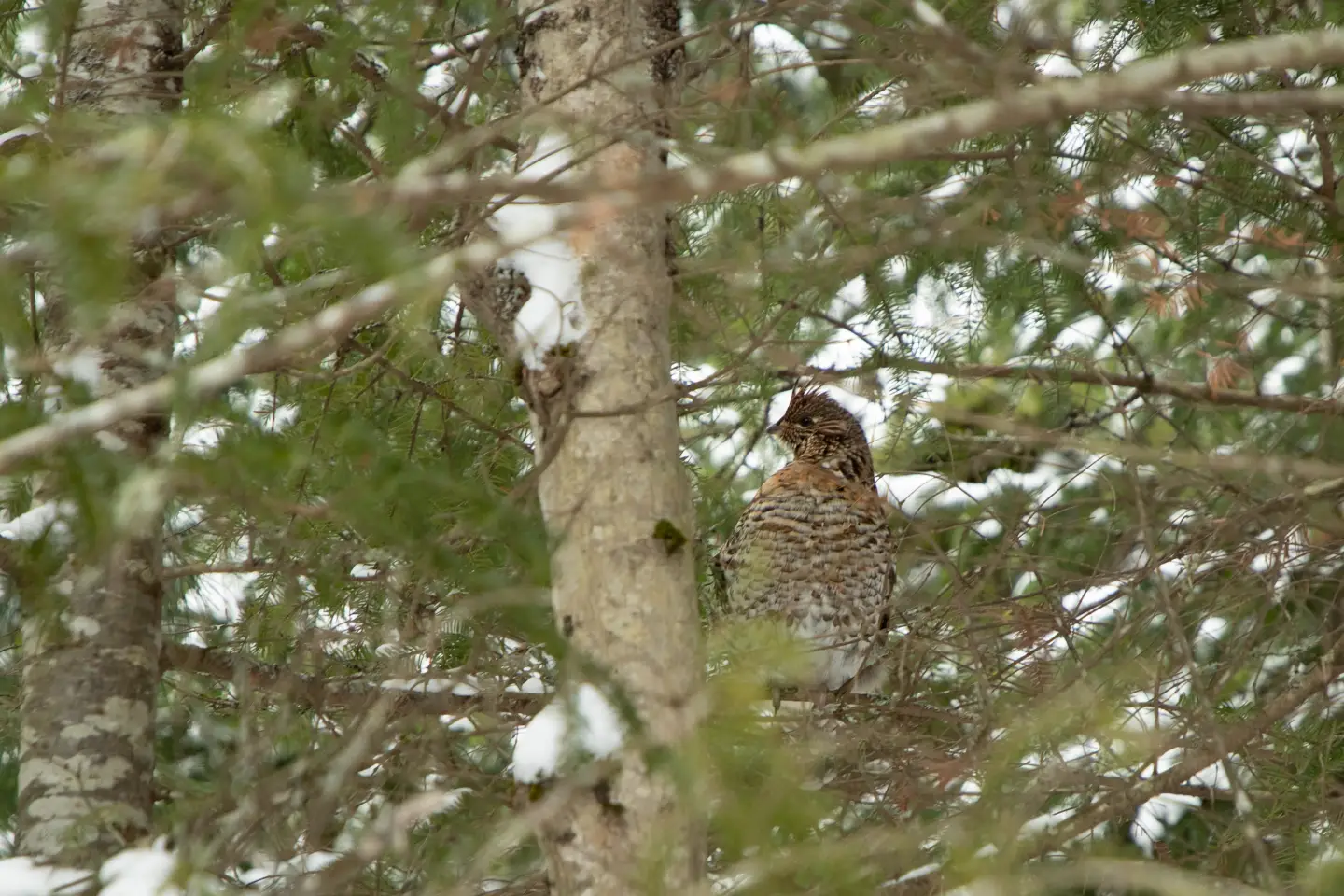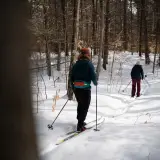When the first snowflakes fall, many of us start thinking about skiing, sledding, and ice skating. But have you considered birding? Sure, the songs and activity of spring and summer are exciting, and species diversity is also at an all-time high, but now, with a blanket of snow on the ground and chillier temperatures, birding is still just as much fun. Let me assure you, there are birds out there in winter. And some unique species can be found in the Adirondack Hub year-round!
Location, location, location
With so much wild land in the Adirondack Hub, there is plenty of room for birds to find a place to eat, roost, and spend their winters. You don’t even have to travel deep into the woods to find these species. There are many excellent roadside birding spots across the entire Adirondack Hub, especially in Minerva and Newcomb.
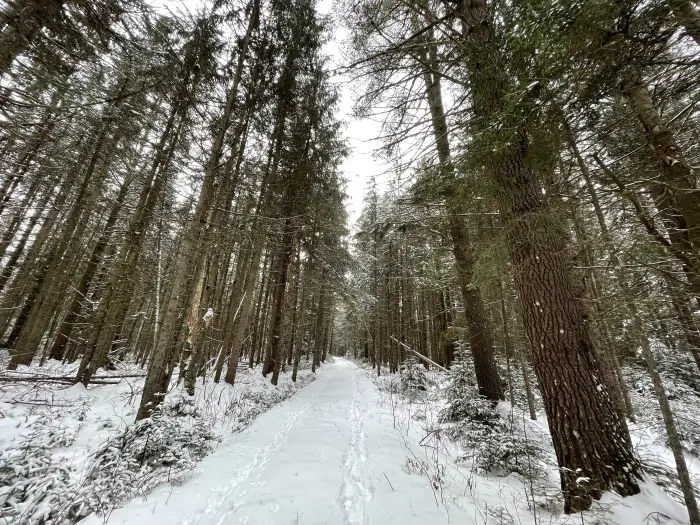
The reason the Adirondack Hub is such a fine place to bird is that it sits in some of the greatest boreal habitat in the Adirondacks. Boreal means “northern;” species found in boreal habitat are more frequently found in places like Canada. There is a holy boreal-trinity of species that birders often gravitate towards: Canada Jay, Boreal Chickadee, and Black-backed Woodpecker. On this day, our goal was to find all three. You’ll have to read on to see if we were successful.
Walking in TR’s shoes
I actually don’t know if this path is related to Teddy Roosevelt beyond a name, but the Roosevelt Truck Trail is a fantastic place to go for a hike, snowshoe, or cross-country ski. Coincidentally, TR loved the outdoors and has deep history in the Adirondacks, so I’d like to think he would have enjoyed this trail. We decided to combine a winter walk with some Roosevelt Truck Trail birding on this day.
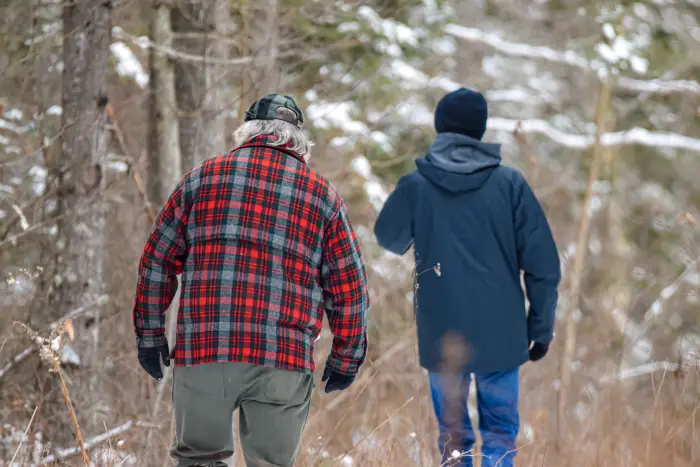
Our group consisted of myself, two others, and one energetic dog. We opted to begin our walk at the southern entrance of the Truck Trail, off Route 28N, in the town of Minerva. The entire trail spans the gap betweenst Route 28N and Blue Ridge Road. Coming from the direction of Newcomb, there is a small gravel road just beyond the railroad tracks; we located it by an American Flag hanging near the entrance and coordinates are available on the DEC website. (A word of caution: this road may not be plowed in winter. It wasn’t on this day.)
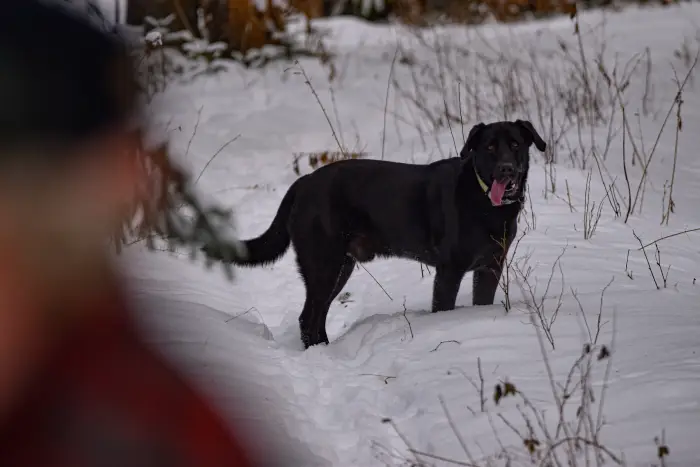
Within minutes of passing the gate and starting the trail, we heard our first bird: a Black-backed Woodpecker. These birds are bigger than Downy Woodpeckers and maybe a little smaller than Hairy Woodpeckers. Black-backed Woodpeckers typically spend a lot of time in one spot, so listen for their drumming as you make your way through boreal forests. Chances are you’ll get a look at one if you hear the drumming. Since they stay in one spot for longer than most woodpeckers, it makes them a little easier to photograph, if they aren’t obscured by branches or other trees. We ended up seeing three Black-backed Woodpeckers on this trip.
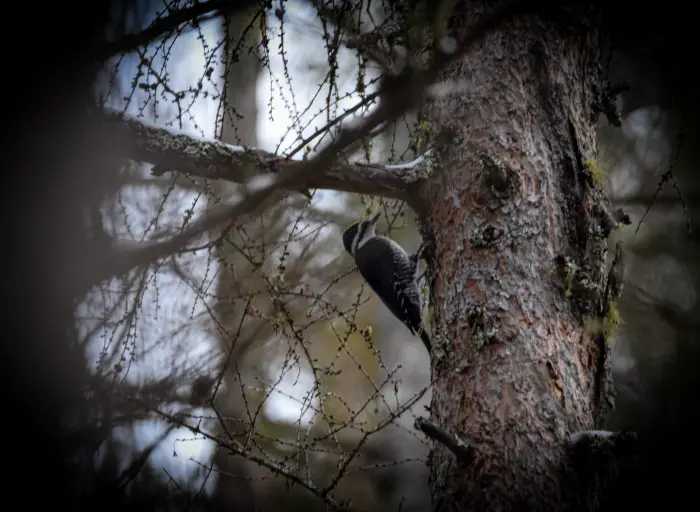
However, the further we went along the trail, the less birds we saw. Soon, we stopped hearing them entirely and only tracks from Ruffed Grouse and snowshoe hare could be found. All three of us were a little surprised by the lack of bird activity since the following day had a snow storm prediction. Before a big storm, birds generally tend to quiet down, but we figured with so much advanced notice, they’d all be out foraging pre-storm.
Our focus then became finding Ruffed Grouse since there were tracks everywhere. We thought maybe, if we were quiet enough, we could sneak up on one in a tree and get a good photo. In total, we flushed 5 different grouse.
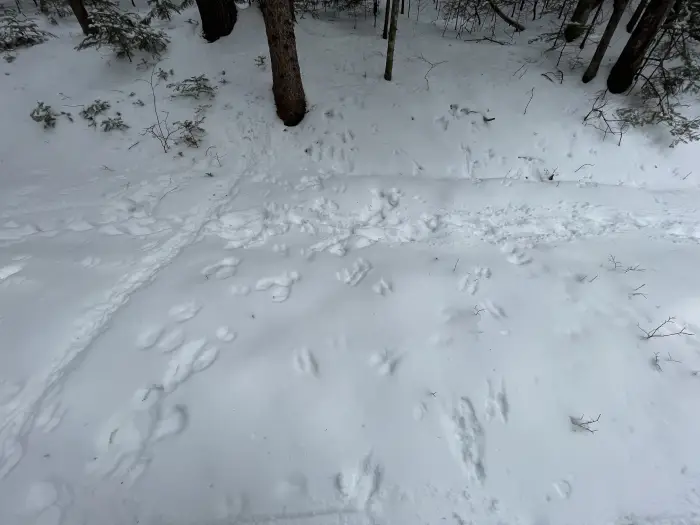
We walked about 1.5 miles of the trail before deciding to head back. The birds weren’t very active and our dog was showing some signs of slowing down. (Of course, he had probably run 10-miles at this point, circling back and forth between us.) Birding in winter is not about finding a high diversity of species; it’s about quietly searching for the hardy residents who call the Adirondack forests home for the season. Unfortunately, we didn’t see or hear any Boreal Chickadees or Canada Jays. But in addition to the Black-backed Woodpeckers and Ruffed Grouse, we located Black-capped Chickadees, a Common Raven, and one Downy Woodpecker.
The walk out was just as smooth as the walk in. The trail has some ups and downs, but nothing incredibly steep or challenging. We didn’t ski in today, but I’d like to return sometime this winter to ski the entire length (and hopefully find the bird species we missed!). We drove through all Adirondack Hub towns and noted that Common Redpolls were, well, common at a lot of feeders this year! If you’re looking for other birding spots in the Hub, check out the Town Beach in Schroon Lake, the Adirondack Interpretive Center in Newcomb, any of the roadside pull-offs in Minerva, or even the Frontier Town Campground in North Hudson. Keep a watchful eye for Common Redpolls, Red Crossbills, and Evening Grosbeaks. It's a big year for "winter finches."

While you’re out birding in the Adirondack Hub, check out some local dining options for take-out or dine-in, or shop local at one of the many stores in the area. Grab your binoculars and get out there today!
